Drone delivery of sylvatic plague vaccine baits to prairie dogs to advance black-footed ferret recovery.
This work was possible due to a partnership between Model Avionics (http://www.modelavionics.com/), National Fish and Wildlife Foundation (https://www.nfwf.org/programs/northern-great-plains-program), U.S. Fish and Wildlife Service (https://www.fws.gov/endangered/), and World Wildlife Fund (https://www.worldwildlife.org/places/northern-great-plains).
Sylvatic plague is the primary threat to the endangered black-footed ferret and their prairie dog prey. Spread by fleas, this non-native disease decimates whole colonies of prairie dogs, depriving ferrets of food and their preferred shelter, prairie dog burrows. Combatting it requires innovation. An injectable plague vaccine for ferrets is effective for an individual’s lifetime. But preventing plague in prairie dog populations is more complicated because of the sheer number of individual animals.
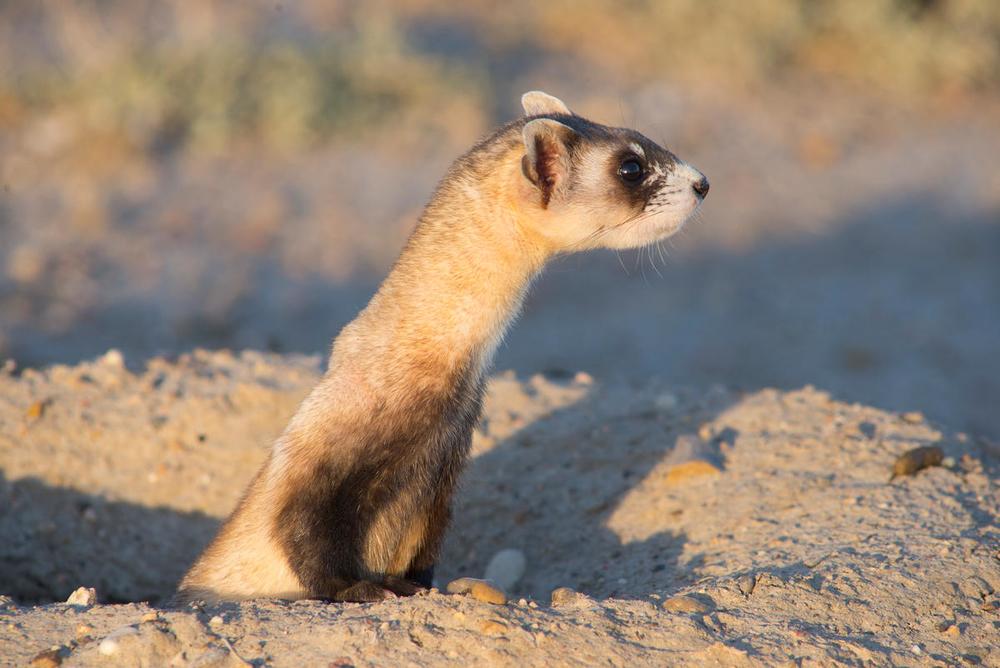
A captive-bred black-footed ferret observes its new surroundings after being released at Snake Butte, Fort Belknap Reservation, Montana. Photo Credit: © WWF-US / Clay Bolt
In search of a solution, between 2001 and 2009 researchers at the U.S. Geological Survey National Wildlife Health Center and the University of Wisconsin developed and conducted extensive laboratory trials on peanut butter-flavored vaccine baits to protect prairie dogs from sylvatic plague (prairie dogs love peanut butter). After promising results in the laboratory setting, field trials began in 2012 with technicians distributing vaccine baits by hand on 50-acre test plots. Again, the results were promising, and large-scale field trials ensued.
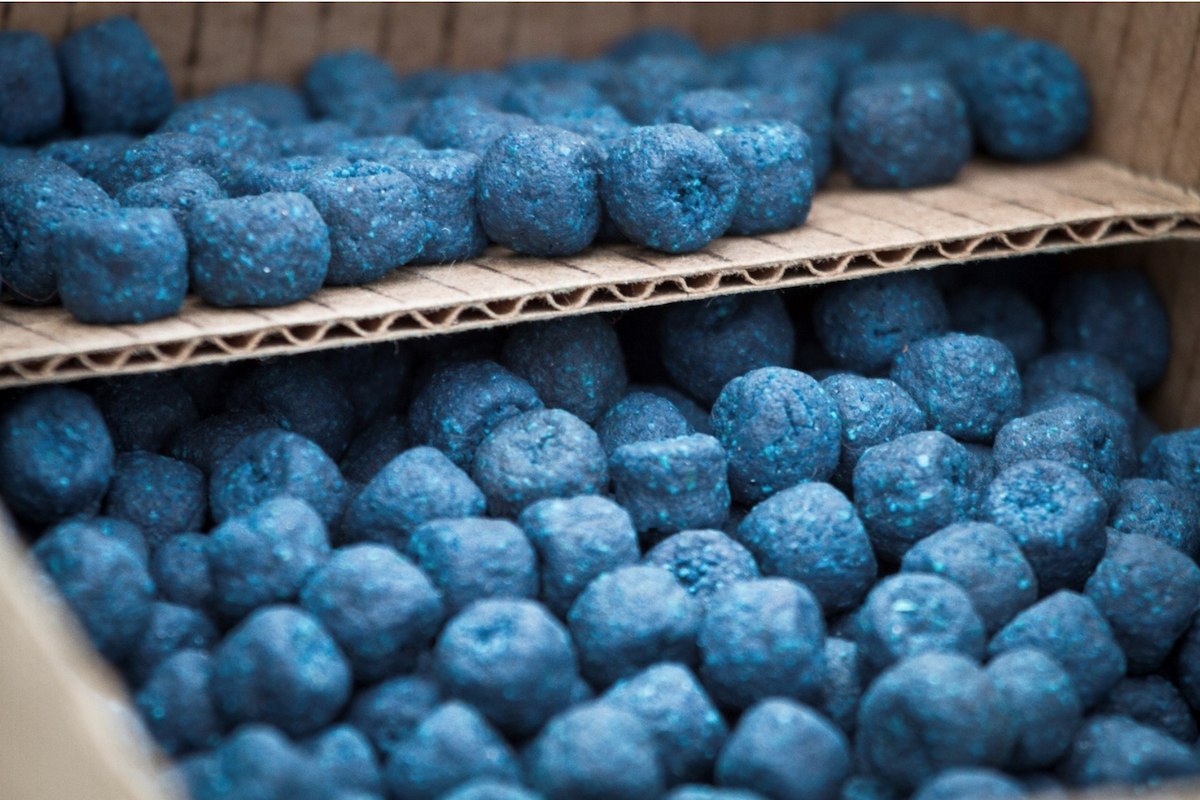
Oral vaccine baits were developed by researchers at the U.S. Geological Survey National Wildlife Health Center and the University of Wisconsin to protect prairie dogs from sylvatic plague. They are dyed blue so biologists and prairie dogs can see them. Photo credit: © Conservation Media/WWF-US.
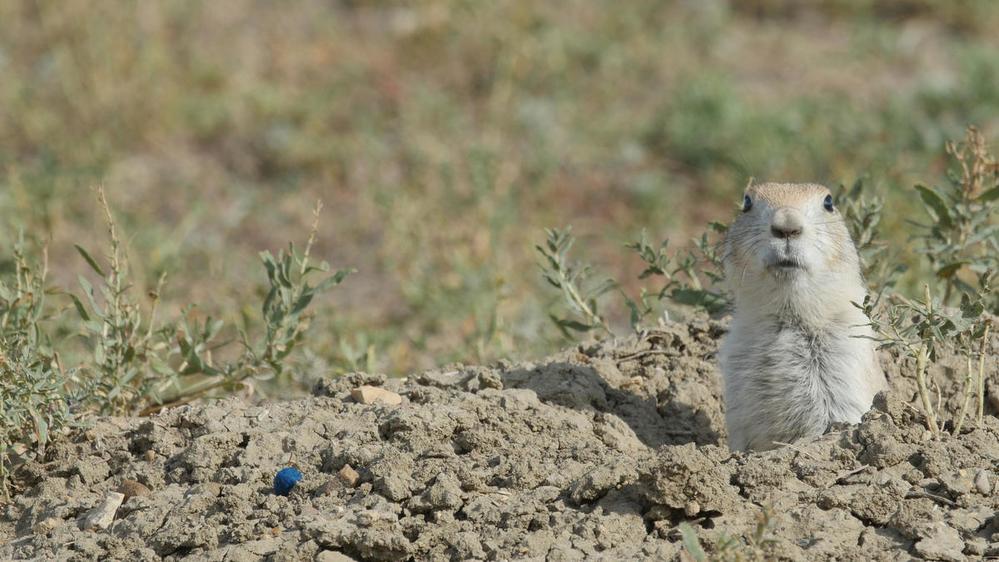
Black-tailed praire dog and vaccine-ladden pellet in Montana, United States. Photo credit: © Conservation Media / WWF-US
However, an efficient and economical mechanism to deliver the vaccine baits across many thousands of acres of prairie dog colonies (i.e., black-footed ferret habitat) had yet to be developed. To address this, World Wildlife Fund, the U.S. Fish and Wildlife Service, engineering company Support XXL, and drone manufacturer Model Avionics developed three mechanized vaccine bait delivery methods: the first drops one bait at a time from a custom designed unmanned aerial vehicle (UAV); the second drops one bait at a time from an all-terrain vehicle (ATV); and the third drops three baits simultaneously from an ATV.
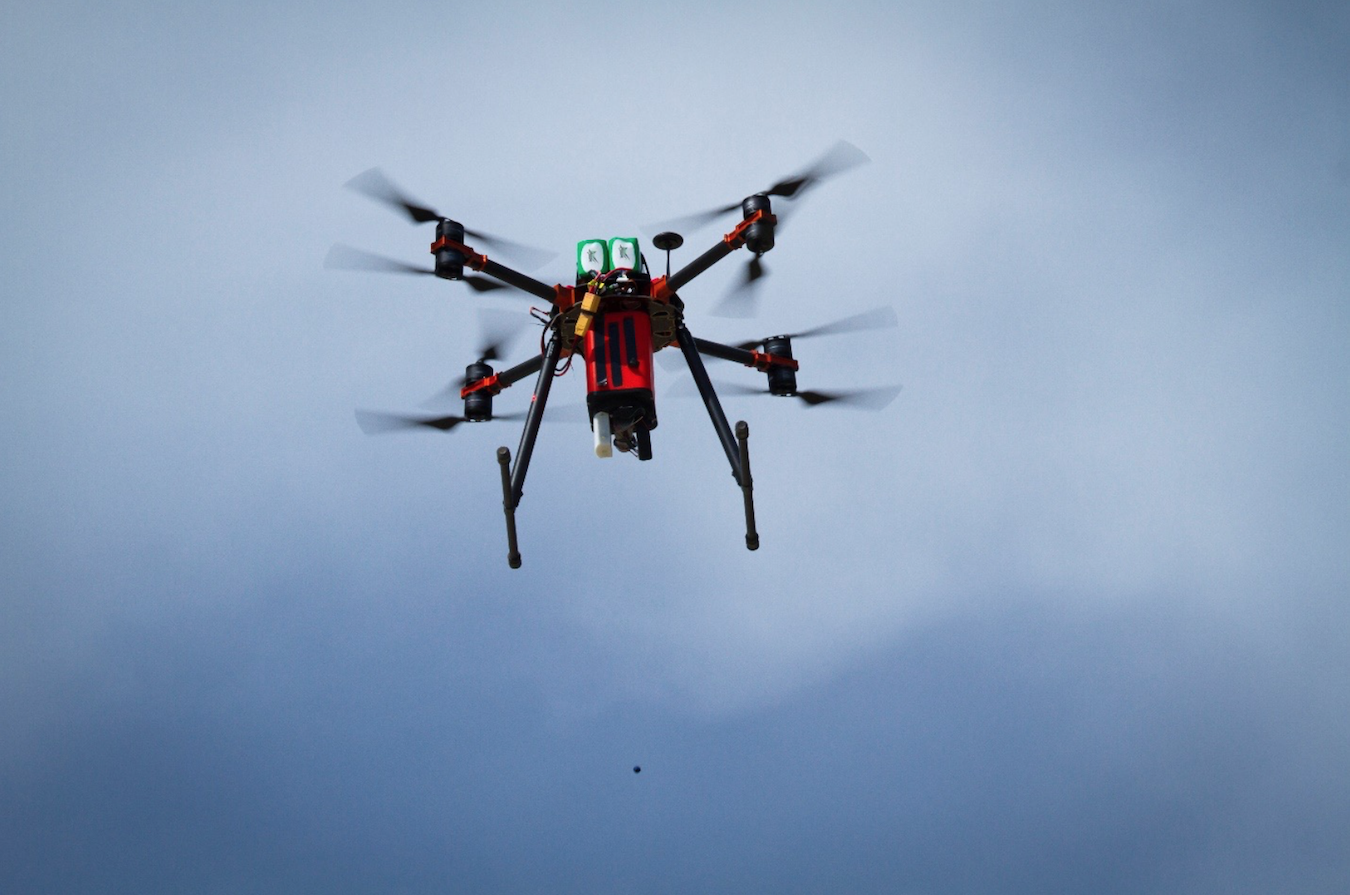
A custom-built multi-rotor UAV, guided by a PixHawk Global Positioning System (GPS) flight controller, drops a sylvatic plague vaccine bait over a prairie dog colony on the U.L. Bend National Wildlife Refuge in Montana. Bait drops are triggered via the GPS information from the UAV. Using Mission Planner software, flight plans were uploaded via a wireless telemetry link to it. Individual flight plans were developed using previously mapped and segmented Geographic Information Systems (GIS) shapefiles depicting prairie dog colony polygon perimeters using ArcGIS, Excel, and the Mission Planner software. Photo credit: © Conservation Media/WWF-US.
At the time, the recommended dosage rate of the vaccine baits on black-tailed prairie dog colonies was 50 baits per acre, which needed to be distributed uniformly on a 9-meter x 9-meter grid (30 feet x 30 feet) across each prairie dog colony. This posed a formidable engineering challenge!
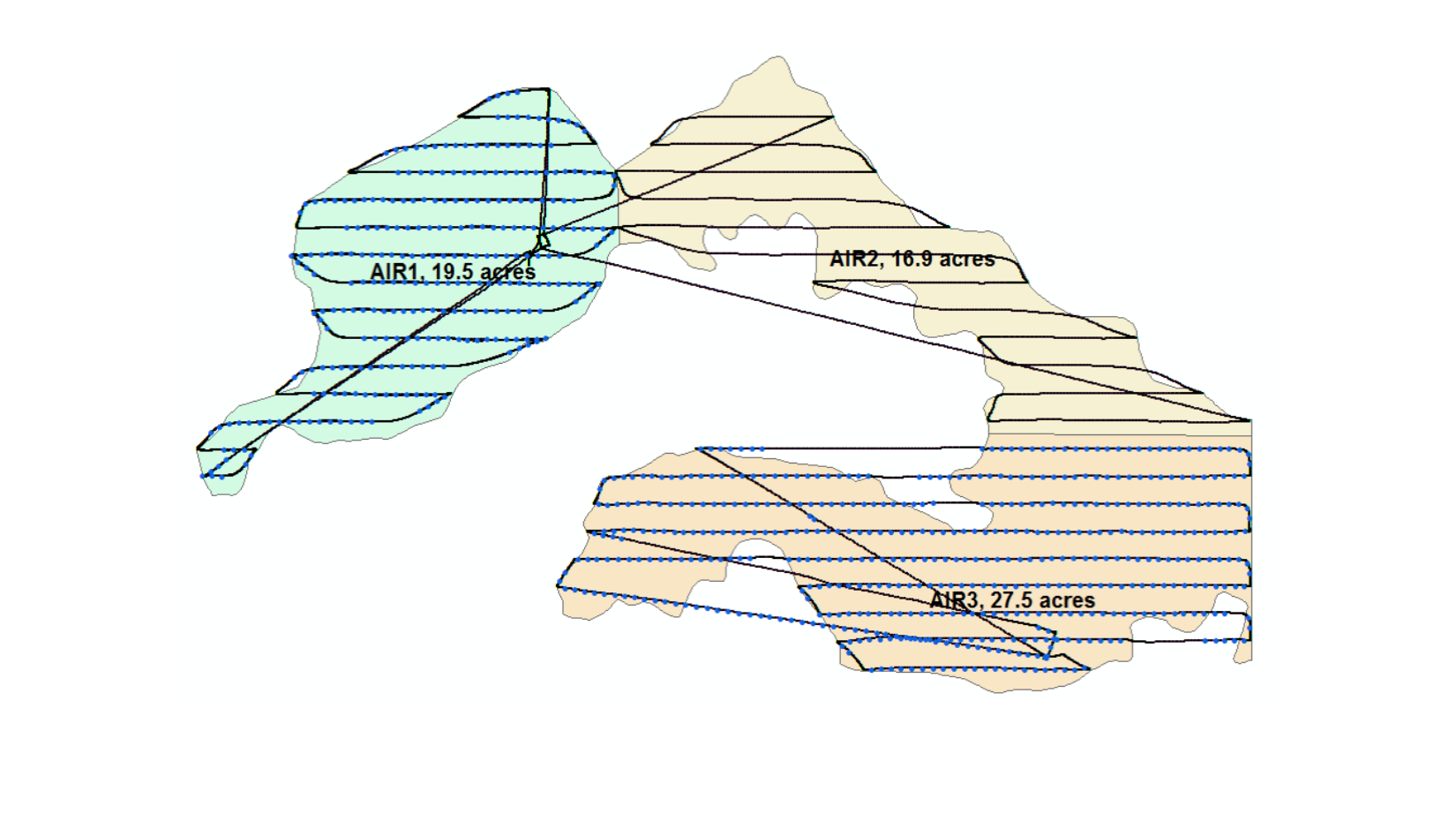
Multi-rotor UAV flight path over three parcels of a prairie dog colony on the U.L. Bend National Wildlife Refuge in Montana. Data from Randy Matchett, U.S. Fish and Wildlife Service.
In August 2016, the partnership tested all three prototypes across 1,200 acres of prairie dog colonies on U.L. Bend National Wildlife Refuge in Montana. The following month, biologists from Colorado and South Dakota used the two ATV methods to apply the vaccine baits to 3,000 acres of prairie dog colonies. These tests indicated that these new mechanized vaccine delivery methods were practical, efficient, and affordable.
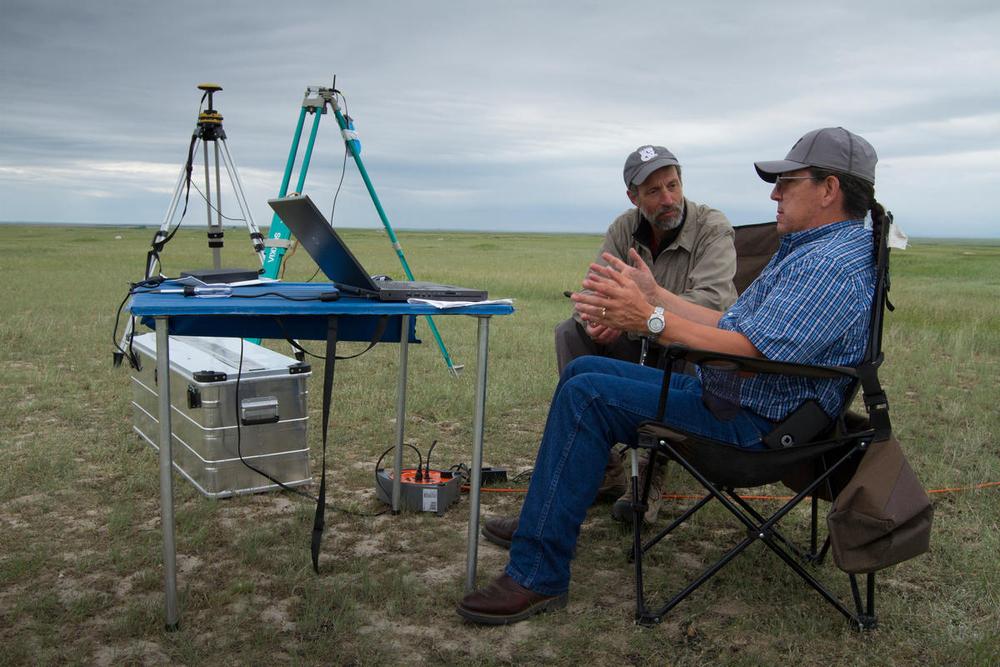
Drone Experts Collaborate with Tribal Partners. Drone consultant Ron Behrendt discusses the use of unmanned aerial systems with Fort Belknap Indian Community Council President, Mark Azure. Photo Credit: © Conservation Media / WWF-US
While successful, there were bait jamming issues with the initial dispenser designs. In 2017, WWF, USFWS, and Model Avionics (the “team”) completely re-designed the dispensing mechanisms for reliably dispensing three baits simultaneously (triple-shooters) from both ATV- and UAV-mounted platforms.
These systems greatly enhanced vaccine bait delivery efficiency by dropping, on each GPS-controlled trigger, one bait pellet straight down while simultaneously, one bait pellet is “shot” 9 meters to the left and one bait pellet is “shot” 9 meters to the right, effectively treating three transect lines at once. Using the ATV and UAV triple-shooters, sylvatic plague vaccine baits were delivered to prairie dogs across 7,000 acres in Montana, Colorado, and South Dakota in 2017.
The team recently received a patent for the triple-shooter design, the first of its kind.
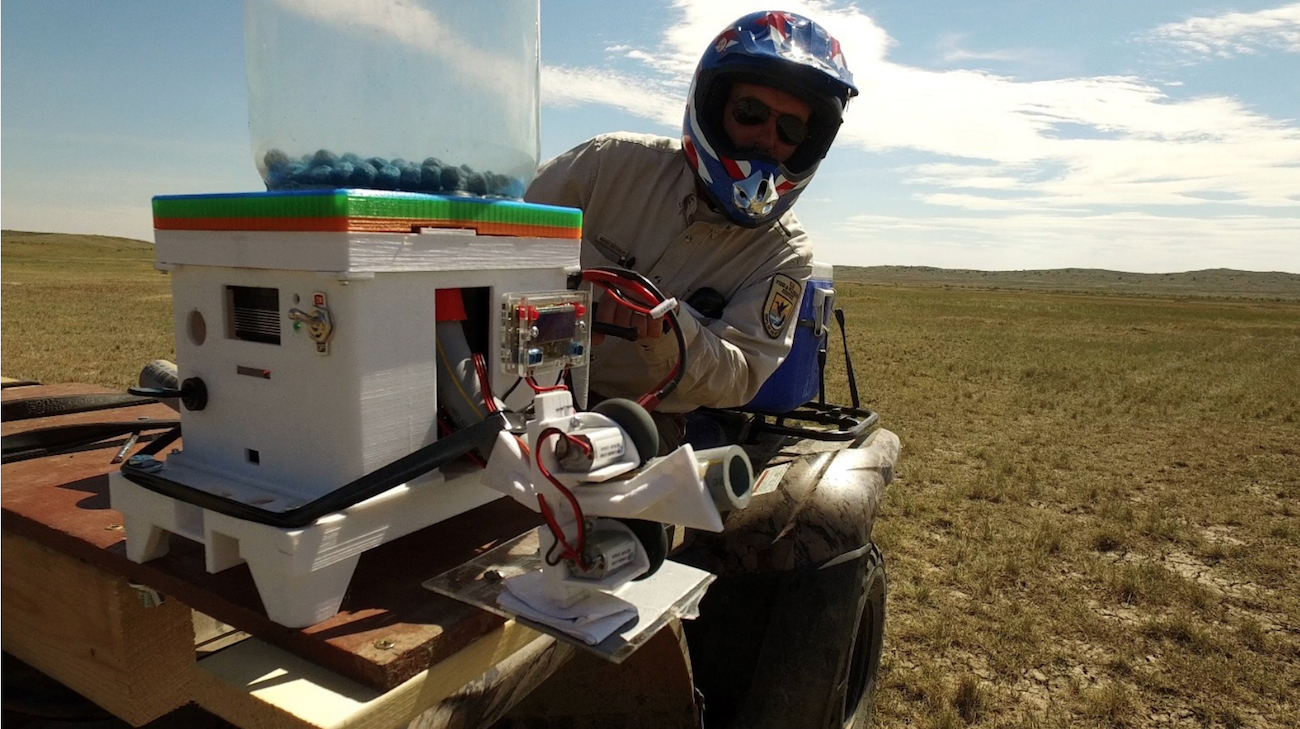
The ATV bait dispensers have a built in GPS module with logging capabilities used for triggering the drops and for recording the location of each trigger, along with a track log of the route travelled. Drivers follow transect lines pre-loaded in a GPS mounted to the ATV’s handlebar. Photo credit: © Conservation Media/WWF-US.
Although much progress has been made to effectively deliver vaccine baits to prairie dogs, much work remains to improve the performance and durability of the UAV and ATV triple-shooter bait delivery systems. The baits are delivered frozen to keep the vaccine viable. When they thaw during application, jams sometimes occur. The ATV delivery system needs to be fortified so it can better withstand the variable terrain. In addition, the bait jamming issues are being addressed by redesigning the delivery system’s circuit board.
Constructing the delivery system with stronger material (like PVC) might address the durability issue, but we have yet to evaluate options. With these improvements, this invention will help protect prairie dogs against sylvatic plague over thousands of acres in the Great Plains, ensure a food source for black-footed ferrets, and help us attain our goal of removing them from the endangered species list.
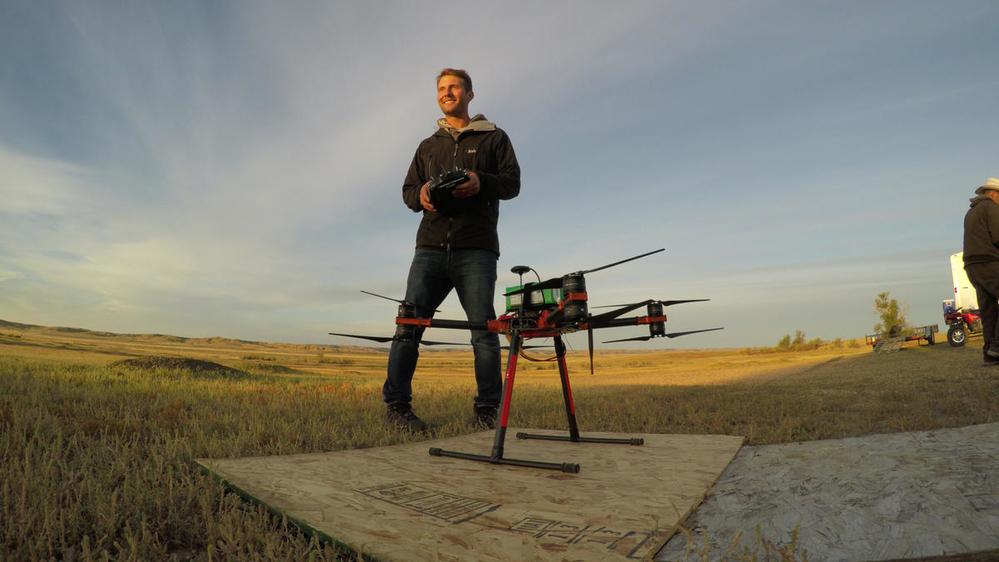
Pilot Jonas Marcinko prepares to launch the drone in Montana, United States. Photo Credit: © Conservation Media / WWF-US
Thank you to WWF's Northern Great Plains Program for sharing their work and images with WILDLABS. Read more about the role of technology in saving the black-footed ferret in Kristy's other recent case study, WWF: Using Technology to Detect and Protect the Endangered Black-Footed Ferret.
Read more about WWF NGP's work with ferrets and prairie dogs here.


Add the first post in this thread.